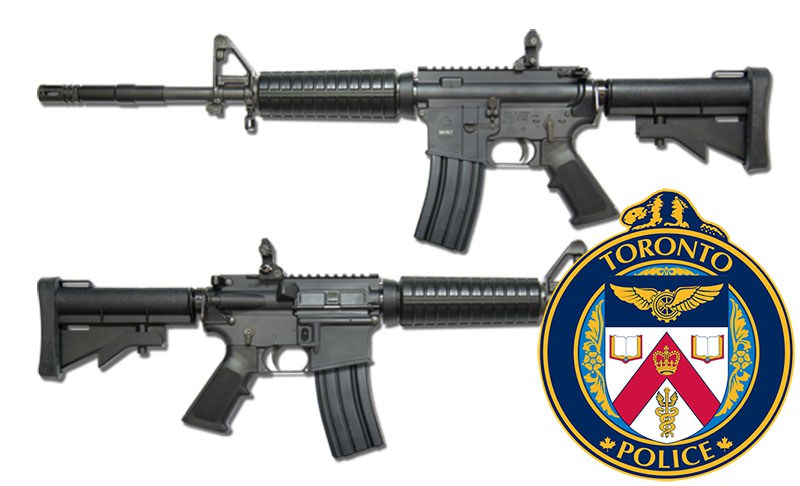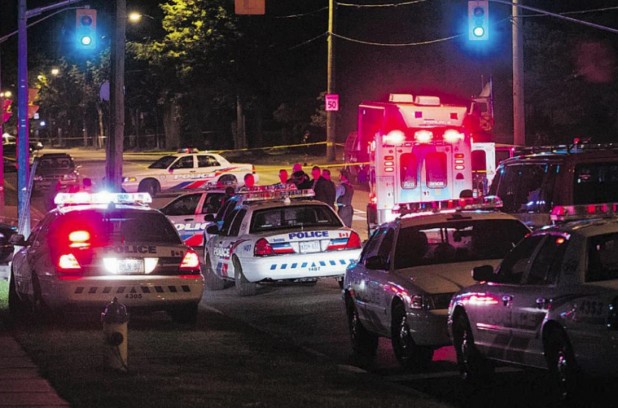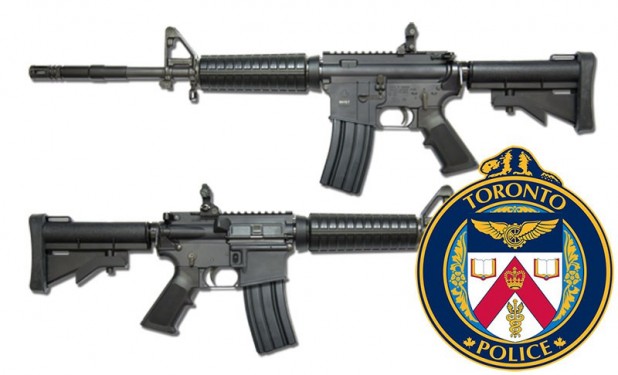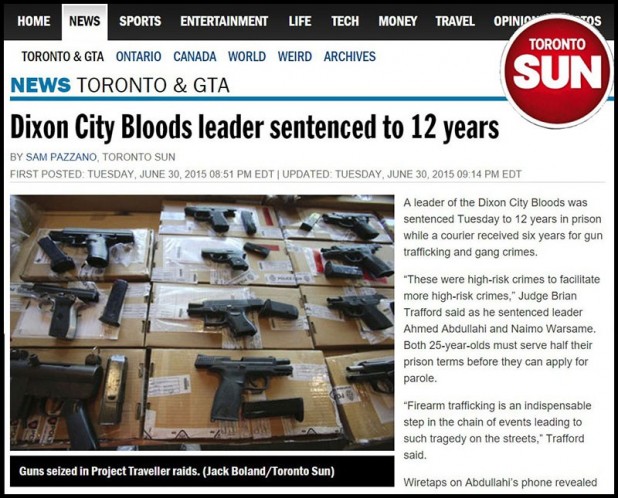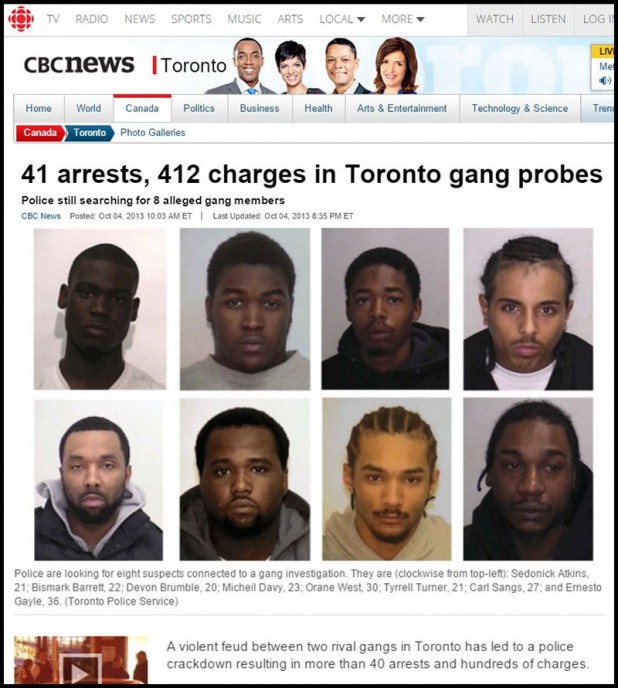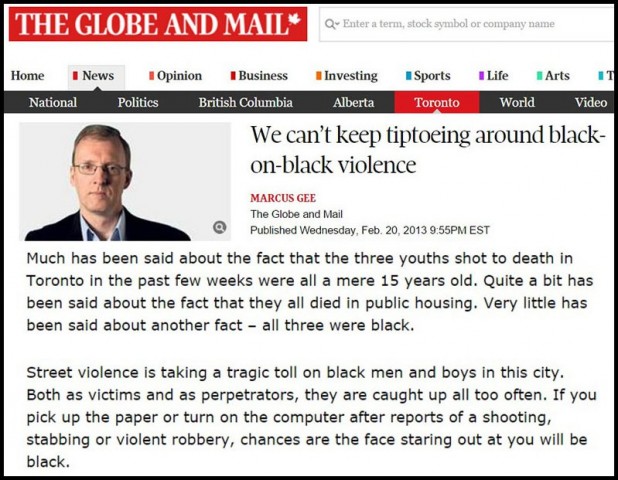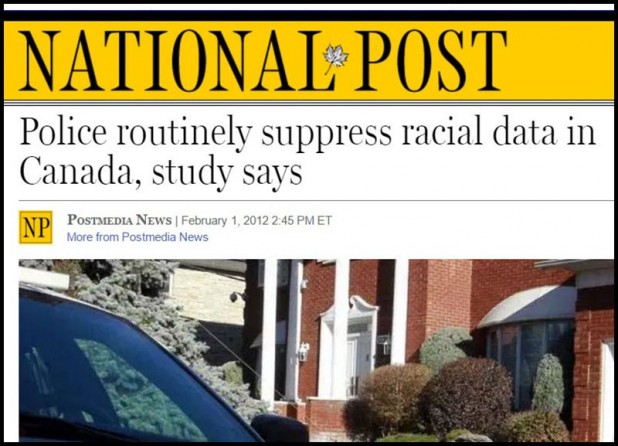The New Observer
January 21, 2016
An upsurge in nonwhite violent crime and gang violence in the now minority-white city of Toronto, Canada, has seen the increasingly outgunned police force acquire military-style assault rifles for their frontline officers.
The acquisition of the rifles—announced this week—means that Toronto has now joined several other Canadian city police forces in increasing their firepower as Third World immigration swamps the previously white cities.
Toronto police spokesman Mark Pugash was quoted as saying that the Colt C8 patrol carbine, which is similar to an M-16, has been used for years by the Emergency Task Force, the guns and gangs unit, the army, and the Royal Canadian Mounted Police (RCMP) emergency response teams.
Pugash said that the C8 is more accurate and easier to use than other high-powered firearms, and more effective against body armor, which police “increasingly often encounter.”
The semi-automatic weapons will be distributed by the end of May to three scout cars in each of the city’s 17 divisions—51 in total, though some are part of the force’s existing stock.
According to the “2011 National Household Survey: Immigration, Citizenship, Place of Birth, Ethnicity, Visible Minorities, Religion, and Aboriginal Peoples” report issued by the Canadian government, 49 percent of those living in Toronto (1,264,395 people) “identified as a visible minority.”
According to the official definition, a “visible minority” are people “who are non-Caucasian in race or nonwhite in color and who do not report being Aboriginal.”
The racial demographic count in Toronto report is based on statistics compiled in 2010, which means that they are at least five years old.
Seeing as Canada admits at least 250,000 “immigrants and refugees” every year (equivalent to over one million in five years)—and that the vast majority of these are from the Third World—it is highly unlikely that the 2010 statistics are in any way accurate. Whites are most certainly therefore, an absolute minority in the city.
As a result, the “multicultural face of Toronto” is represented in its crime structure makeup. The city has Asian triad gangs, South American cartels, Tamil organized crime groups, and gangs such as the Sri Lankan “VVT” and “AK Kannan.”
Black gangs from America have also grown along with the local African population, with the result that there are now several Bloods and Crips gangs present.
Most recently, the increasing number of Central and South American “migrants” have seen the establishment of the Mara Salvatrucha gang and other drug-related criminal enterprises.
Official police statistics in Toronto show a corresponding dramatic increase in violent crime in the city over the last year, particularly when it comes to the 243 shootings in 2015, a 42 percent increase from the previous year. The 152 shootings involving injury or death were up more than 60 percent from 2014, and shootings during which no one was injured are up more than 77 percent.
The racial nature of this crime wave in Canada is officially hidden, but is obvious from compilations of newspaper reports, and some rare honest journalists who have written about the topic.
For example, the Globe and Mail’s Marcus Gee reported in February 2013 that “We can’t keep tiptoeing around black-on-black violence.”
Gee wrote that “If you pick up the paper or turn on the computer after reports of a shooting, stabbing, or violent robbery, chances are the face staring out at you will be black. The political class won’t talk about it for fear of being labeled racist. The media are almost as cowed.”
In August 2015, Rosie DiManno, a columnist for the Toronto-based Star newspaper, revealed some of the background behind the racial crime dilemma faced by liberals in that city. In an article titled “A thorny history of race-based statistics” (Aug. 17, 2015), she wrote:
Twenty-six years ago, a staff inspector by the name of Julian Fantino—future Toronto police chief—sat in a small committee room and delivered a slew of explosive race-based crime statistics focused on the Jane-Finch neighborhood.
Fantino, then head of 31 Division, told North York’s committee on community, race, and ethnic relations that, while blacks made up 6 percent of the Jane-Finch population, they accounted for 82 percent of robberies and muggings, 55 percent of purse snatchings and 51 percent of drug offenses in the previous year.
The Star’s Royson James was apparently the only reporter present. He duly filed a story that appeared on the next day’s front page. All hell broke loose.
Police in Ontario were forbidden to compile race-based crime statistics. Solicitor-General Joan Smith, responsible for law enforcement in the province, castigated Fantino for collecting and releasing data that “accomplishes nothing useful.” Black activist groups and social agencies condemned Fantino for fueling existing prejudices. Police chief Jack Marks insisted the force did not keep race stats.
The provincial police watchdog, the Ministry of Community and Correctional Services, Toronto Police Service, not even Statistics Canada will touch the stuff. An attempt by the Star to match known fatal confrontations with contemporaneous media reports left too many gaps, because race of the victims wasn’t included in those stories. And that, I’m certain, harks back to an era when the Star vigilantly eliminated race details from news coverage.
A February 2012 article in the National Post (“Police routinely suppress racial data in Canada, study says,” February 1, 2012), quoted a study which said that many Canadian police agencies “actively suppress” racial data when delivering their annual crime reports to Ottawa.
The study—which set out to attack white police for allegedly being “racist,” was published in the Canadian Journal of Law and Society, and written by Paul Millar, an assistant professor of criminology at Nipissing University in North Bay, Ontario.
Millar said that the continued “whitewashing” of criminal data makes it virtually impossible for researchers to gauge whether police are dealing with racial and ethnic minority groups in an equitable manner.
However, Millar was forced to admit that the reluctance to collect and share the data may have more to do with public relations concerns: “They don’t want to be perceived to be racist, to be blunt,” he said.
Meanwhile, as the nonwhite population continues to grow and ethnically cleanse white people from the cities of Canada, those urban areas continue their descent into dystopian crime-ridden Third World slums.
